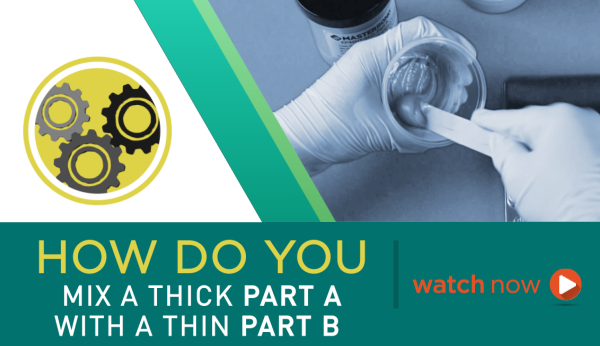 View this email online View this email online
|
 |
|
|
|
 |
|
Proper and precise measuring and mixing are key steps to ensure that your adhesive will perform in the manner that you are expecting. This step can be more challenging when dealing with formulations that have widely varied viscosities between Parts A and B. Our technical experts have a demo that offers some tips and techniques to correctly mix your two component system.
|
|
Here are some two component epoxy and silicone systems with a significant disparity in viscosity which can use the same mixing technique: EP42HT-3AO: High Glass Transition Temperature For more information, request a technical data sheet on EP42HT-3AO EP30LTE-LO: NASA Low Outgassing Two Component Epoxy For more information, request a technical data sheet on EP30LTE-LO EP29LPSPAO-1 Black: Forgiving 100 to 65 Mix Ratio by Weight For more information, request a technical data sheet on EP29LPSPAO-1 Black Supreme 45HTQ: Quartz Filled, Heat Resistant Epoxy For more information, request a technical data sheet on Supreme 45HTQ MasterSil 151TC: Highly Flexible Addition Cured Silicone For more information, request a technical data sheet on MasterSil 151TC EP21TDC-2LO: Flexible, Thermally Conductive Epoxy Note that this compound has a 1 to 3 mix ratio by weight or volume. Part A has a thickness of 35,000-85,000 cps while Part B has a heavy viscosity of 300,000-800,000 cps. The same mixing technique can be applied, but the process should start by adding a thicker B part first. For more information, request a technical data sheet on EP21TDC-2LO |
|
|
||
|
Copyright |
|||

 July 2018
July 2018